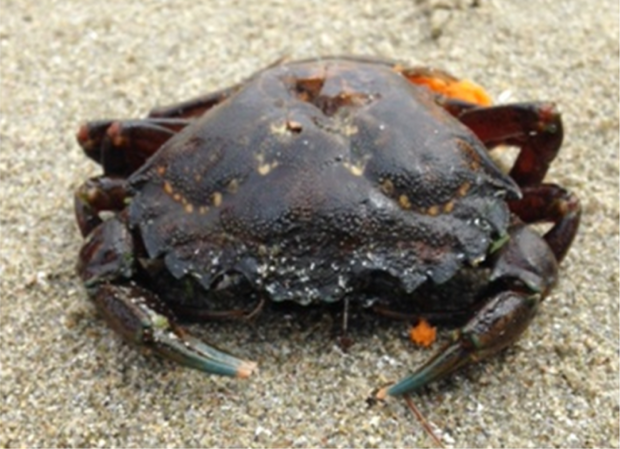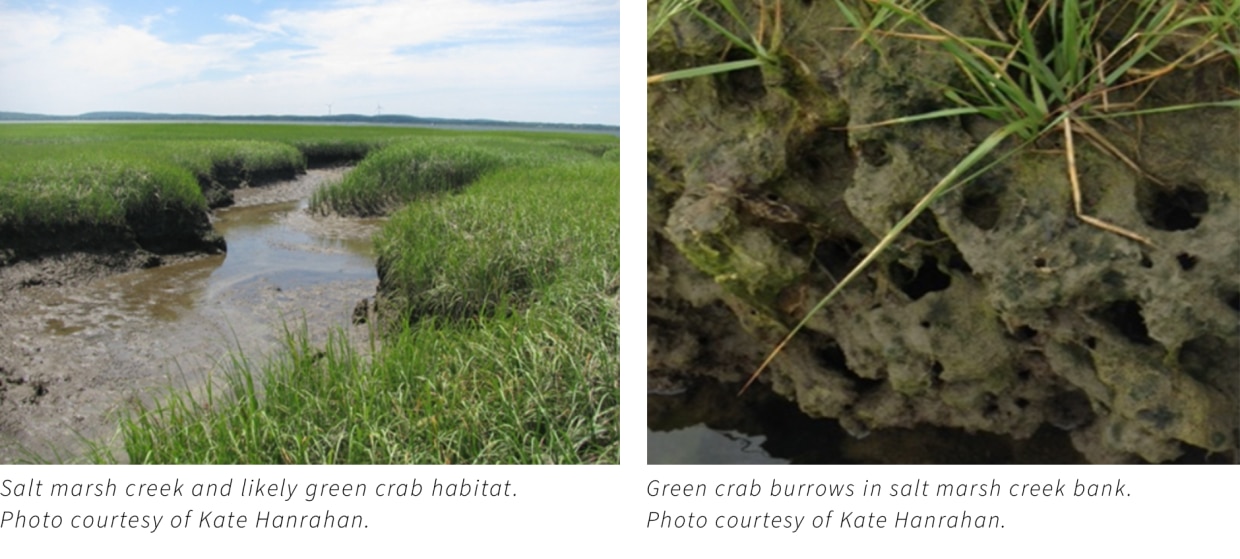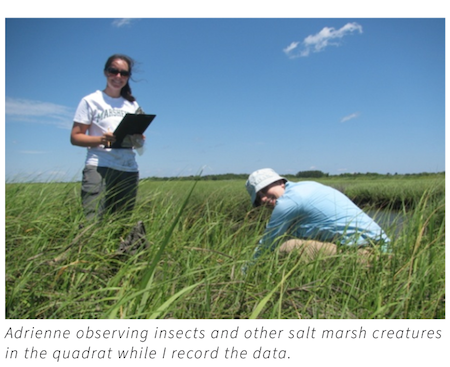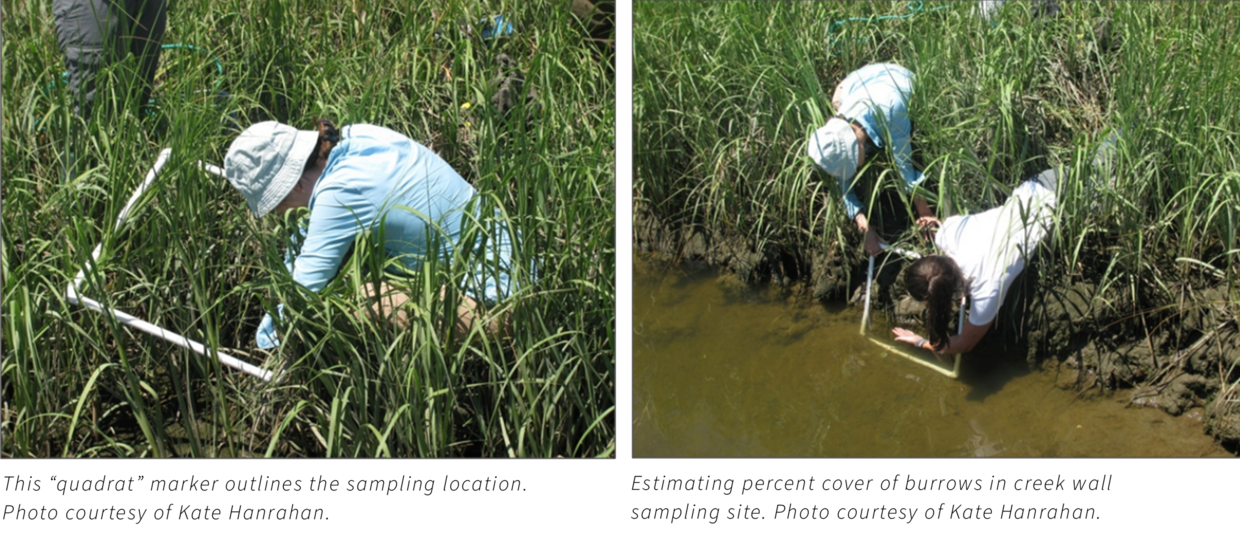This is a guest blog post from the Massachusetts Office of Coastal Zone Management (CZM), written by Kate Hanrahan.
The European Green Crab
The European green crab isn’t a Massachusetts native, but it has lived here for well over 100 years. This highly invasive species has recently gained a lot of attention because of how it preys on shellfish populations and harms eelgrass beds. Originally from the North Atlantic coast of Europe and the North African coast, it is now abundant all the way from Delaware to Nova Scotia and is often the most common crab species found in this range. Despite being called a “green” crab, this species can be red, orange or even brown depending on its molting cycle (i.e., where it is in the process of shedding its shell to grow). For further details on this species and how to recognize it, see this identification card (PDF, 2.7 MB).
As part of its work to assess salt marsh health, staff from the Massachusetts Office of Coastal Zone Management have frequently observed abundant green crabs, often burrowing in the banks of marsh creeks. This summer, CZM is examining the potential impacts of green crabs in salt marsh habitats, including the impact of burrowing activity. As a summer Coastal Ecology Intern, I’m part of the team looking at this issue. After first developing a simple methodology to look at green crab impacts, we then set out to find them in the field. On July 10, I got to go out on the aptly named boat, “Always an Adventure,” with Bob Boeri, Adrienne Pappal and Jan Smith from CZM to collect samples for this summer project.
We all met at the site in Newbury, Massachusetts, just after high tide on, thankfully, one of the most beautiful days of the summer so far. Bob took us on a very nice ride to the salt marsh sampling site. There were no other species of crabs at the site, which made it easy to determine where all the burrowing was coming from. We had to wait out on the marshes for a bit before the tide was low enough that we could access the bank wall. We instantly observed that the burrowing was prominent, both in the bank wall and on the creek bed, and we could see the green crabs shuffling all along the bank and in the creek.
On this day, we were sampling five locations each on the banks of two creeks. The sample locations were chosen at random, so we needed to use the GPS to locate each point. We began collecting our samples in the high marsh and worked our way toward the mouth where the boat was anchored. We tried to walk in each other’s footsteps to avoid trampling the marsh plants as best we could. The marsh appeared to be in great condition, minus some noticeable erosion by the mouth. As an added bonus, Jan pointed out the many marsh birds as we trekked through their pristine habitat.
At each sample location, we laid a half-meter quadrat made of white PVC down on the surface of the marsh. We then counted organisms such as mussels, insects, and crustaceans and any burrows we saw within that space. We also recorded what plants were within the quadrat and how much of the surface of the marsh was covered by plants. Next, we moved the quadrat to the wall of the creek and counted the number of green crab burrows within the space and visually estimated the percent of the quadrat covered by the burrows. Finally, we took two sediment samples to analyze the chemistry of the marsh soils.
One interesting thing we observed was that the burrows were more concentrated in the high marsh than in the river mouth. I am looking forward to getting the sediment chemistry results to be able to complete a full analysis and see how these factors are linked together.
Case studies like this one are critical because they can confirm laboratory studies and past scientific findings. The initial methodology for this project was based on literature reviews of studies completed throughout the world. After hearing more details from seasoned CZM field expert, Adrienne Pappal, several changes had to be made to adapt this study to this region. The findings from this summer project will help CZM better understand how salt marsh ecosystems are changing, with respect to green crab populations, and coordinate with other conservation agencies to address these impacts. If you are interested in volunteering to look for green crabs and other marine invasive species in Massachusetts, check out the Marine Invader Monitoring and Information Collaborative (MIMIC) website.



